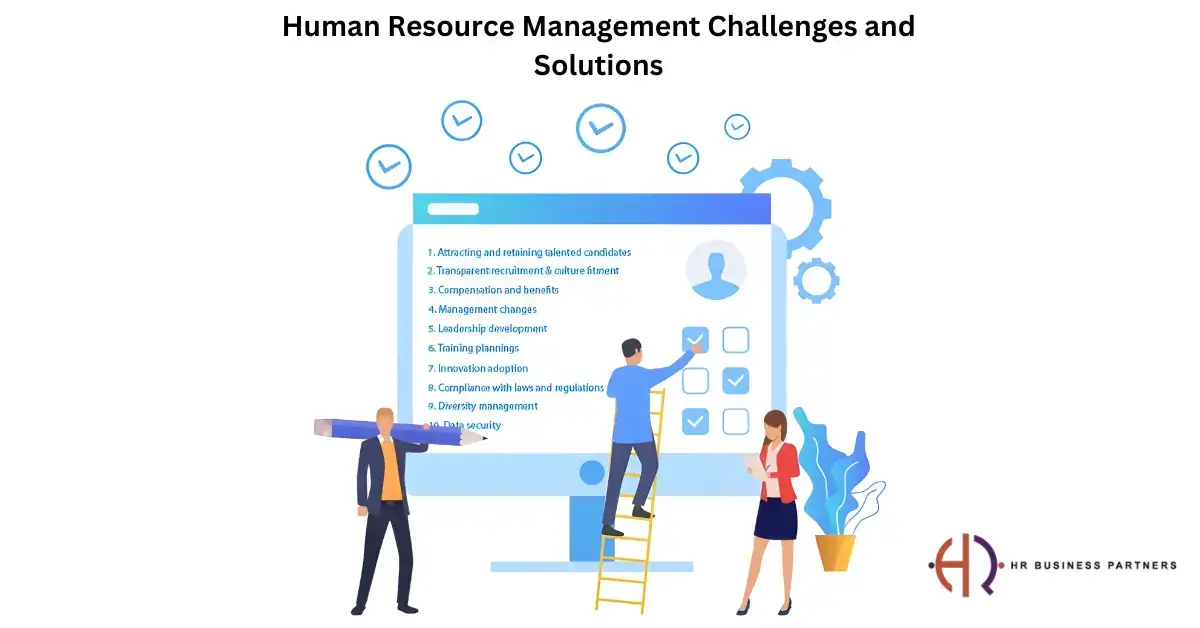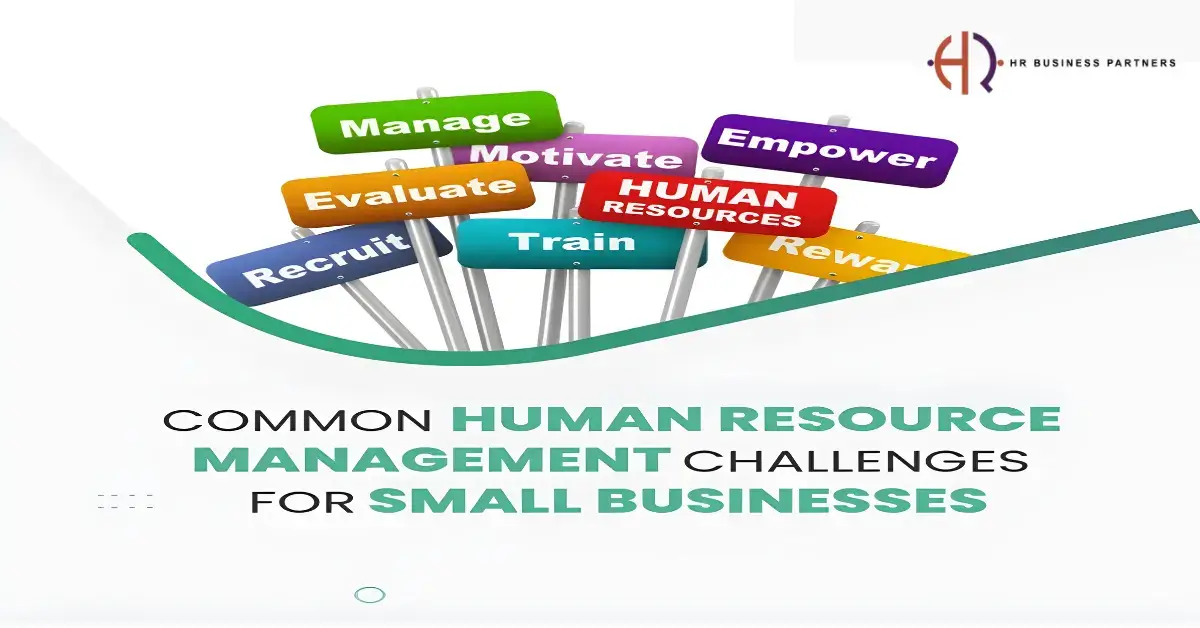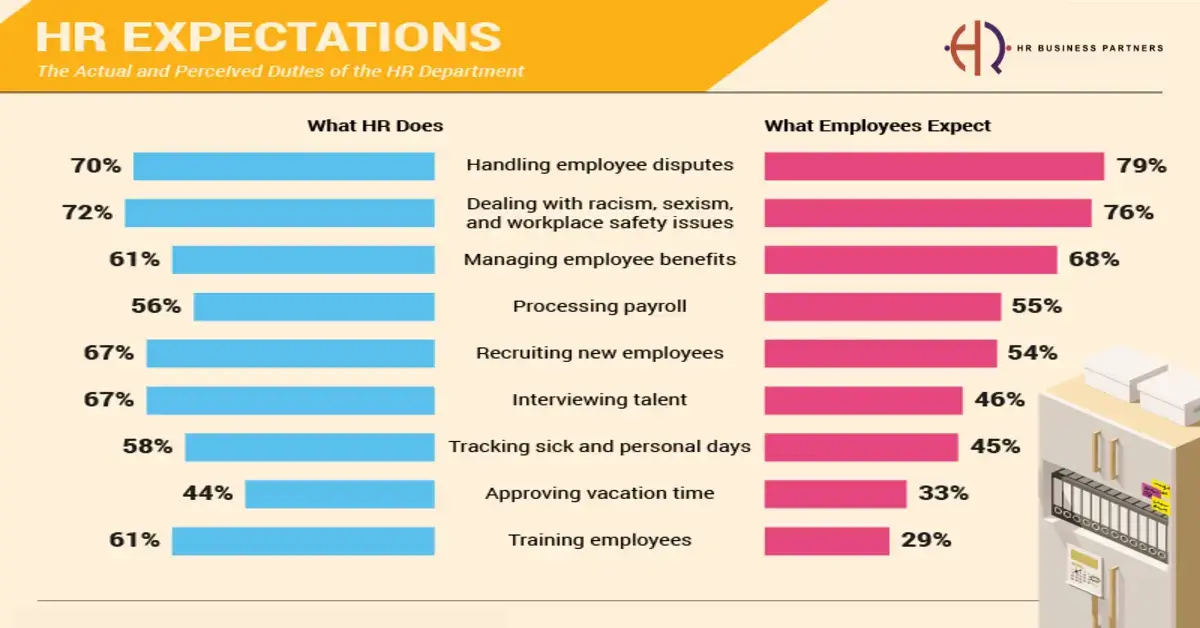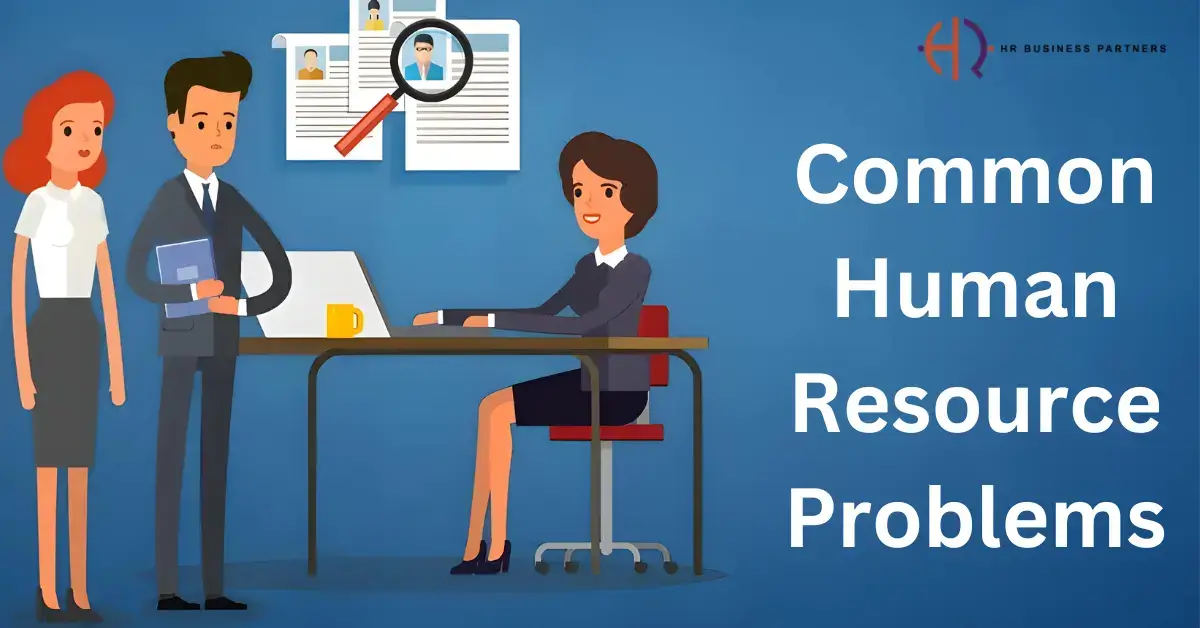Human Resources, or HR, is like the superhero team of every company. They deal with common human resource problems every day. HR helps with things like ensuring employees get along, hiring new people, and ensuring the company follows the law. This job is not easy, but it’s essential.
In this blog post, we’ll share tips and ideas to help solve these HR problems. Whether you’ve been working in HR for a long time or you’re just starting, you’ll find helpful advice here. We’ll look at how to make the workplace better for everyone, step by step.
First, let’s discuss how HR solves problems with employees. They listen and find ways to help everyone get along. Next, we’ll look at hiring. HR makes sure to find the right people for the job. Then, there’s keeping good employees. HR works hard to ensure people want to stay at the company. Lastly, we’ll cover the rules. Laws about work change all the time. HR keeps track of these changes to ensure the company does what’s right.
So, let’s start learning together. With these tips, we can end common human resource problems. Let’s improve the workplace one step at a time.
Common Human Resource Problems and Solutions
Human resources (HR) departments face many common problems in today’s busy workplaces. One big challenge is hiring and keeping good workers. In a competitive job market, it’s important to attract and keep the best people. Companies need to offer good benefits and a friendly workplace to draw in new workers and keep the ones they have.
Another key issue is managing diversity and making sure everyone feels included. As teams become more varied, HR must help all employees feel respected and part of the group. This can make people happier at work and lead to better teamwork and new ideas.
Now, let’s look at some solutions. For hiring problems, companies can try new ways to find workers, like using social media. They can also offer flexible work options and build a strong reputation as a great place to work. These steps make a company more attractive to job seekers and show that it cares about modern work styles.
To improve diversity and inclusion, companies can offer training on cultural understanding and hidden biases. These programs help build a workplace where everyone can succeed. Keeping regular checks with employees and having open talks can also make a more welcoming place where everyone’s opinion is important.
By tackling these common human resource problems with smart solutions, companies can work better and make a happier, more effective workplace. These efforts help fix issues now and lead to a strong future.

Human Resource Management Challenges and Solutions
In human resource management, professionals face many challenges that can affect a company’s performance and the happiness of its employees. One big issue is keeping up with new technology that changes how we work. This includes using digital tools for hiring and managing employees’ work performance. Another major challenge is following labor laws, which can be complicated and different in each area.
There are intelligent and effective ways to handle these challenges. For example, HR departments can offer training to manage new technology that helps everyone improve with digital tools. This makes using new software easier and helps employees improve their skills. Also, to deal with complex labor laws, companies can hire legal experts or use advanced HR software. This software helps track and handle laws that the company needs to follow.
These strategies help solve problems now and prepare the company for future success. By investing in these areas, businesses build a strong HR team to handle changes and keep improving. This proactive way of managing solves common human resource problems and makes the whole organization healthier.
Explore Specific Challenges in HR Management
Human resources management often faces common problems that can affect a company’s daily work. One big issue is keeping up with technology changes at work. This means adding new tech and managing teams that might work in different places. Also, HR has to make sure the company follows new job laws to protect both the business and its workers.
Another important challenge is building a positive place to work and managing diversity well. As workplaces get more diverse, HR has to deal with different cultural expectations and work styles. They need to make sure everyone feels respected and valued.
So, to handle these common human resource problems, HR departments must be ready to adapt and be open to change. This helps make the workplace better for everyone.
Offer Solutions That Are Both Innovative and Effective
HR departments need new ideas to handle common human resource problems. For instance, when new technology comes into the workplace, HR should provide training. This helps employees learn how to use new tools and ways of working. Also, allowing flexible work schedules can help employees from different areas. They can choose how and when they work best, making them more productive.
HR teams should also use automated tools to keep up with employment laws. This helps them make changes quickly and stay within the law. Additionally, making fair policies and offering regular training on diversity and inclusion can create a friendly workplace culture. Strong communication and ways to give feedback are essential, too. They make sure every employee feels listened to and involved. These steps help solve some significant challenges in HR management.
Overcoming HR Challenges
When we think about human resource problems and solutions, we often consider the challenging situations in any workplace. The secret to solving these issues is to use innovative strategies that work well in different companies.
One suitable method is open communication. For instance, a tech company in California had many employees leaving. They found out it was because the employees felt ignored. The company started holding regular meetings where everyone could speak freely. This simple change helped reduce employee turnover by 40% in one year. Listening to and addressing employee concerns can improve job satisfaction and keep employees around longer.
Another strategy is providing chances for professional growth. A retail chain in New York saw that their employees felt bored and stuck. To fix this, they began offering workshops and training to help employees learn new skills and take on new roles within the company. This led to more employees staying because they could see ways to grow and move up in the company.
Getting outside help can offer new ideas. An automobile manufacturer needed help with team conflicts and low morale. They hired a human resources consultant who started team-building activities and workshops to solve disputes. Within a few months, work productivity went up, and the workplace felt much better.
These examples show that understanding your employees’ needs and planning carefully can help solve problems. There are many effective ways to handle human resource issues, whether by encouraging open talks, improving skills, or bringing in outside experts.

Challenges Faced by HR Professionals
Detail the Personal and Professional Challenges HR Professionals Encounter
HR professionals face many challenges at work that test their strength and ability to adapt. One big challenge is keeping up with the fast changes in job laws and office technology. They need to keep learning and sometimes quickly change rules that can be very detailed.
On a personal level, HR workers often deal with conflicts at work and have to stay fair. They must balance what employees and bosses expect and need.
In short, HR professionals handle tough situations by constantly learning and remaining fair in conflicts. This helps them effectively manage both work challenges and personal issues.
Discuss How These Challenges Impact Overall Company Performance
These challenges affect how well a company does and its employees’ happiness. For example, not keeping up with new laws can lead to legal problems. This can harm the company’s reputation and cause significant fines. Also, if HR professionals are too busy and can’t deal with employee problems well, it can make employees unhappy and not trust the company. This may lead to employees leaving and less work getting done.
However, if HR manages these challenges well, it can create a better workplace. This ensures that the company follows the law and supports a suitable environment for everyone. As a result, this improves how the company performs by keeping employees loyal and motivated.
Future Challenges of Human Resource Management
Anticipate Future Trends and Challenges in HR
Looking ahead, human resource management will face new challenges. Technology like artificial intelligence will change how companies hire and manage workers, focusing more on data. Another significant change is the focus on mental health at work. Companies will need strong plans to help with employee well-being to keep productivity high and lower turnover.
Also, more people working from home have created unique challenges. HR must find new ways to measure work and bring teams together, even when employees are not in the same place. This will help maintain a strong company culture across different locations.
Preparing and Adapting to Future Changes in the HR Field
To handle future challenges well, HR professionals must keep learning and adaptable. It’s essential to use new technologies and include them in HR work. For example, training HR teams on the latest digital tools can make the HR department more efficient and quick to respond.
Preparing for these changes also involves improving communication and creating more flexible work policies. These policies should meet the needs of a global, remote workforce. By being proactive about these trends, HR can help build a strong organization ready for the future. These strategies will solve common human resource problems and prepare the organization for new changes in how we work.
The Role of Technology in HR Management
How Technology, Especially AI, Changes HR Practices
Technology is changing how HR teams work. Artificial Intelligence (AI) helps these teams complete their tasks more quickly and based on clear facts. For example, AI can look at a lot of data about when employees leave their jobs and help determine what makes them happy or unhappy. This lets HR do better at keeping employees and making work a better place.
AI also speeds up hiring by quickly checking resumes and picking the best candidates. This saves time and makes hiring fairer by reducing personal biases.
How AI Helps with Smart Decisions and Work Efficiency
AI helps HR managers understand complicated information about their workforce’s performance. For instance, AI can use a lot of different data at once to assess how healthy employees are doing, something challenging for people to do by themselves. This helps in giving fair feedback and making good decisions about who should get promotions or raises.
AI can also do everyday HR tasks like keeping track of who’s at work or managing payrolls. This not only reduces mistakes but also lets HR people focus on more important things, like making sure employees are happy and growing in their careers.
Using technology like AI helps HR teams do their jobs better and faster, which improves the company’s performance.
The Importance of DEI in Modern HR Management
Diversity, Equity, and Inclusion (DEI) are significant in today’s workplaces, especially for the teams that manage people, known as Human Resources (HR). DEI ensures everyone at work feels influential and respected, no matter who they are. This is crucial because happy workers are usually better workers. A team with people from different backgrounds brings new ideas, which can help solve problems and create new things. This approach helps fix common human resource problems, such as unfair treatment and not working well together.
Companies that care about DEI often do better and attract more skilled people from all over the world. They also get a good name, making more people want to work with them. By focusing on DEI, HR helps build a place where everyone feels welcome and can do well.
How to Create and Keep an Inclusive Workplace Culture
Building a culture that welcomes everyone starts with listening. HR managers should pay attention to what workers say about their time at work, both the good and the bad. Knowing this helps HR make the workplace better for everyone. Training everyone about DEI can teach them how to respect and understand their differences, which allows them to prevent problems like being unfair or leaving people out.
It’s also good to celebrate workers’ different backgrounds through events or stories that share their cultures and histories. This shows that every worker’s background is valued. Having clear rules that promote fairness and respect is essential, too. These rules must be for everyone, no matter their job level. With these steps, HR can ensure that their workplace is friendly and supportive, which solves many common human resource problems.

The Importance of Reskilling and Upskilling in the Face of Technological Advancements
Today, technology is changing how we work very quickly. The skills we needed before may not be enough tomorrow. Reskilling and upskilling are now important to keep up with new tools and ways of working. It’s similar to updating your phone. To keep it working well with the latest features, you need the newest software. In the same way, people need to learn new skills to stay useful in their jobs.
Reskilling is when you learn new skills for a different job. Upskilling means you improve your skills for your current job. These are common human resource problems because sometimes, companies and workers struggle to keep up with fast changes. For instance, someone who has done the same job for many years might find it hard to use new technologies or methods without help. This is why training and learning programs are important. They ensure everyone has the chance to learn and grow.
How HR Can Lead the Charge in Developing a Future-Ready Workforce
Human Resources (HR) departments are very important in preparing employees for the future. They plan and provide all the training that people in the company need. HR knows what skills are important now and what will be needed later. They set up training programs to fill any skill gaps.
HR helps by creating learning opportunities at work. They might organize workshops, and online courses, or invite experts to teach new skills. This helps keep everyone up-to-date and makes workers feel important and supported. When employees see that their company cares about their growth, they are happier and more likely to stay longer. HR’s work in developing a workforce ready for the future helps a company succeed in facing new challenges and technologies.
Frequently Asked Questions About the Future of Human Resource Management
What is the future challenge of human resource management?
Answer: The biggest future challenge for human resource management is staying up-to-date with technology. HR needs to help employees learn new skills and technologies regularly. This is one of the common human resource problems today.
What will happen to HR in the future?
Answer: In the future, HR will likely become more focused on using technology to manage tasks like hiring and training. This will allow HR professionals to spend more time on strategy and helping employees grow in their careers.
What are the 3 biggest issues in HR today?
Answer: The three biggest issues in HR today are adapting to remote work environments, managing employee well-being, and bridging the skills gap through effective training programs. These challenges require innovative solutions to keep businesses running smoothly.
What the future holds for HR?
Answer: The future holds a transformation for HR into a more strategic role that focuses on long-term workforce development and harnessing data to make better decisions. This evolution will be crucial for businesses looking to stay competitive.
What is the biggest challenge for HR?
Answer: The biggest challenge for HR is managing the rapid pace of change in the workplace, especially with the continuous introduction of new technology. This challenge requires HR to be agile and proactive in developing training and development programs.
What is the future of human resource management preparing HR for 2025?
Answer: By 2025, human resource management will need to be well-versed in digital tools and analytics to manage diverse and globally dispersed teams effectively. HR will play a key role in driving organizational change and innovation.
What are the 4 challenges of HRM in brief?
Answer: The four main challenges of HRM are technological adaptation, employee engagement, talent management, and compliance with changing labor laws. Each of these areas requires careful attention and strategic planning to ensure success.
Conclusion
As we finish our talk about common human resource problems, it’s clear that HR faces many different challenges. These range from keeping up with fast technological changes to handling how people work from home. HR professionals play a key role in how workplaces change and grow.
Yet, amidst these challenges lies a unique opportunity. What if, instead of seeing these problems as hurdles, we view them as chances to innovate and reinvent the way we work? Each challenge in HR could be a doorway to creating a more engaging, inclusive, and productive workplace.
Imagine a workplace where HR doesn’t just solve problems but turns them into chances for growth and learning. In this place, technology doesn’t just do tasks for us; it makes working together easier and better. This way of thinking is not just hopeful; it’s needed for the future of work.
So, as we look to the future, let’s think about how HR can do more than just handle common problems. Let’s think about how it can create new solutions that make our workplaces better. After all, the real strength of human resources is in shaping a future where both the company and its employees succeed together.
What steps can we take today to start this change? This is something to think about as we look forward to a future where HR does more than just manage resources—it improves them.


